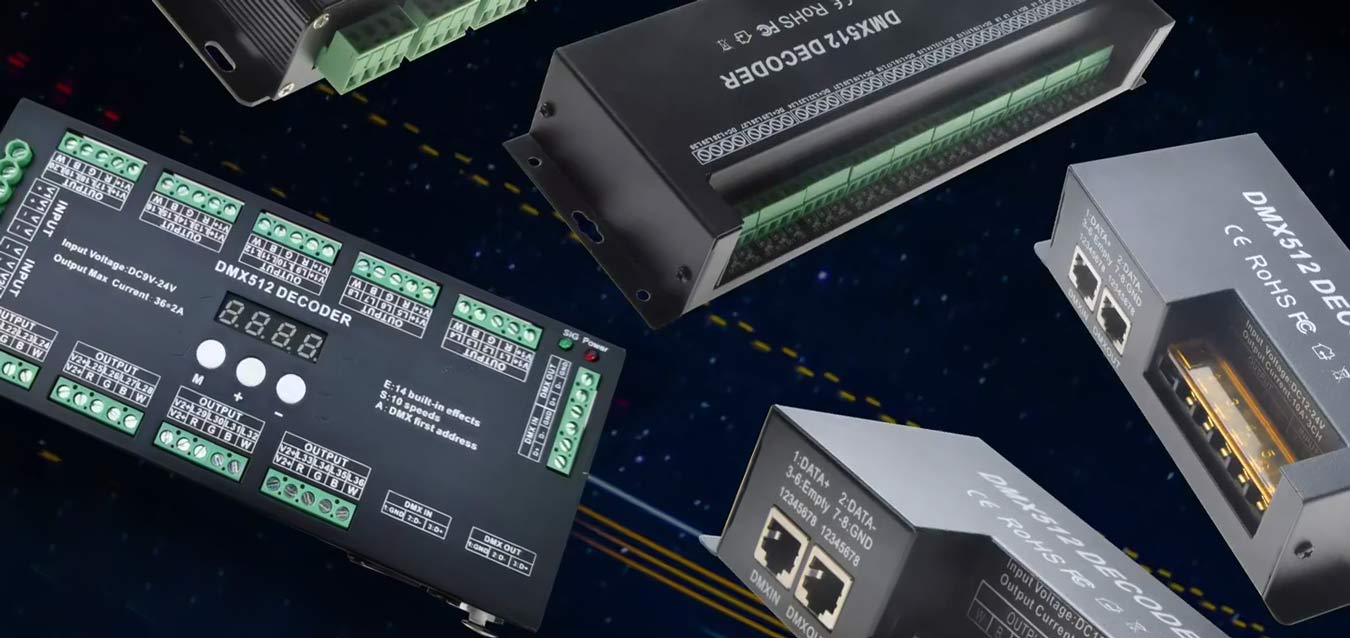DMX512: A Comprehensive Guide to the Standard for Dimmers and Controllers
In the world of entertainment technology, precision and control are paramount. Whether you’re lighting up a theater stage, orchestrating a concert, or creating a dazzling light show for an event, the ability to control and synchronize lighting elements is essential. This is where DMX512 comes into play, serving as the backbone for digital data transmission between controllers and dimmers.
Understanding DMX512/1990
DMX512/1990 is the keystone of lighting control in the entertainment industry. This standardized protocol facilitates the digital transmission of data between lighting controllers and dimmers. It covers crucial aspects such as electrical characteristics, data format, data protocol, connector type, and cable specifications. Originally developed in 1986, it underwent a significant revision in 1990, and it is currently undergoing yet another review. For those interested in obtaining a copy of this standard, it can be ordered from the USITT National Office or from PLASA in Europe.
The Ongoing Evolution of DMX512
In the ever-evolving field of entertainment technology, the DMX512 standard remains at the forefront. Let’s delve into the continuous evolution of this essential standard and the efforts to keep it up-to-date.
Updates in Progress: DMX512 Subcommittee
The evolution of DMX512 is an ongoing process, driven by the dedicated efforts of the USITT DMX512 Subcommittee, sponsored by the Engineering Commission. In response to the Call for Comments issued in March of 1998, the Subcommittee received a staggering 68 proposals. To ensure the highest standards of quality and reliability, the maintenance of DMX512 was transferred to the Technical Standards Program of ESTA (the Entertainment Services and Technology Association) and its Control Protocols Working Group.
Multiple Task Groups were established to address these proposals, and as a result, the drafting of a revised and updated DMX512 standard is well underway. This new version is currently undergoing a rigorous consensus-building process with the aim of becoming an American National Standard. For more detailed information on these ongoing updates, please refer to the DMX512 Update.
DMX512 Goes Global: The IEC Connection
The importance of DMX512 extends beyond national borders. The ongoing revision of the USITT DMX512 standard will eventually lead to the creation of an international edition of the DMX512 Standard. While DMX512 has been widely used since 1986, it’s worth noting that it is not formally recognized in the “official” standards world.
However, this is changing. A proposal to make DMX512 an International Standard was accepted by the International Electrotechnical Commission (IEC) Technical Committee 34. The proposed standard was designated as “Entertainment Technology – USITT DMX512 (IEC Publication 62136).” More information on this development can be found in the section IEC DMX512.
Enhancing Lighting Control: DMX512 Usage and Hazards
Efficient and reliable lighting control is crucial for the success of any entertainment production. Let’s explore how DMX512 contributes to this goal and the potential hazards associated with it.
A Valuable Resource: Moving Light Fixture Usage Data
Professionals in the entertainment industry have access to a valuable resource known as the ESTA DMX Usage Data website. This platform provides comprehensive information on DMX channel usage for a wide range of moving light fixtures. To access this information, simply visit the ESTA Web Site, click on Technical Standards Program, and then select DMX Usage Data under the Public Service Info Provided by the TSP heading.
Hazards to Beware: Power on the Data Lines
While DMX512 has revolutionized lighting control, it is not without its challenges. Some manufacturers of DMX equipment deviate from the standards by placing voltage on Pins 4 and/or 5 of the 5 Pin XLR connector, which is in clear violation of the USITT DMX512 and DMX512/1990 Standards.
Connecting compliant DMX512 and DMX512/1990 equipment to non-compliant gear, especially equipment that uses the secondary data link (Pins 4 & 5), can lead to the disabling and/or damage of the compliant equipment. For a more detailed explanation and guidelines, please consult the DMX512 Hazard Alert.
Potential Confusion: DIN DMX and Labeling
The world of standards can sometimes be complex and confusing. DIN, a German standards organization, has developed a draft standard for “Stage Lighting Control Systems”. This standard heavily relies on the implementation of USITT DMX512/1990.
However, a potential issue arises when considering labeling. The draft manuscript from DIN states that devices conforming to this proposed DIN standard may be labeled as “DMX512/1990,” “DMX512/DIN,” or “USITT DMX512/1990.” This presents a challenge as it could lead to confusion among users who won’t be able to distinguish between products conforming to different standards, bearing the same identifier.
To address this concern, USITT has taken action by retaining counsel to engage with DIN. Together with ESTA, and with the support of PLASA and VPLT, they are working diligently to ensure clarity in the market regarding compliance with the existing DMX512/1990 standard, while simultaneously striving to minimize the proliferation of competing standards as they continue their work on a revised DMX512.
The Future of DMX512
In conclusion, DMX512/1990 has been a cornerstone of the entertainment technology industry, enabling precise control of lighting elements for over three decades. While it has evolved over the years and faces challenges, its importance remains steadfast.
